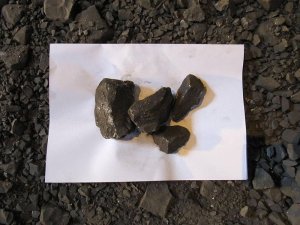![]() The Pacific War Online Encyclopedia
The Pacific War Online Encyclopedia
|
| Previous: Mangalore | Table of Contents | Next: Mangareva |

Manganese is a hard, brittle, gray metal, atomic number 25. It is almost indispensable for manufacturing high-quality steel from marginal ores, as it is a powerful desulphuring agent and combines with silicon in the steel to give it excellent mechanical properties. For steelmaking, the concentrated ore is added directly to the steel furnace. U.S. steel manufacturers of 1941 typically used from 20 to 40 pounds of manganese per ton of steel produced. Manganese oxide is used in dry cells and a host of other applications.
Manganese is fairly abundant in the earth’s
crust, often occurring in the same geological settings as iron
ore. In 1941,
metallurgical grade manganese ore (50% manganese by weight) cost
$69 a
ton. Prior to 1939, the United States obtained
most of its manganese ore from Russia,
but these supplies were cut off with the German invasion in 1941.
Thereafter the United States obtained most of its manganese from
the
Caribbean, South America, and Africa.
Significant deposits were also found in Mexico and India,
and smaller deposits in Malaya,
the
Philippines, and
the
western United States. Though none of the American ore was high
grade, the world's largest deposit of low-grade manganese ore was
found at Butte, and this
eventually supplied 35% of wartime requirements.
Japan relied on imports from India and the Philippines prior to war, and when the Indian sources were cut off, the Philippine and Malayan sources (which had fallen into Japanese hands) were extensively developed. Japan had also extensively stockpiled ferromanganese before war broke out. The submarine blockade led the Japanese to exploit low-grade domestic ores, but these proved inadequate, and much Japanese steel produced in 1945 was not completely desulphured. This made it brittle, particularly at low temperatures.
References
Shore
(1941; accessed 2012-8-4)
U.S. Geological Survey (accessed 29 December 2006)
The Pacific War Online Encyclopedia © 2006, 2011-2012, 2016 by Kent G. Budge. Index